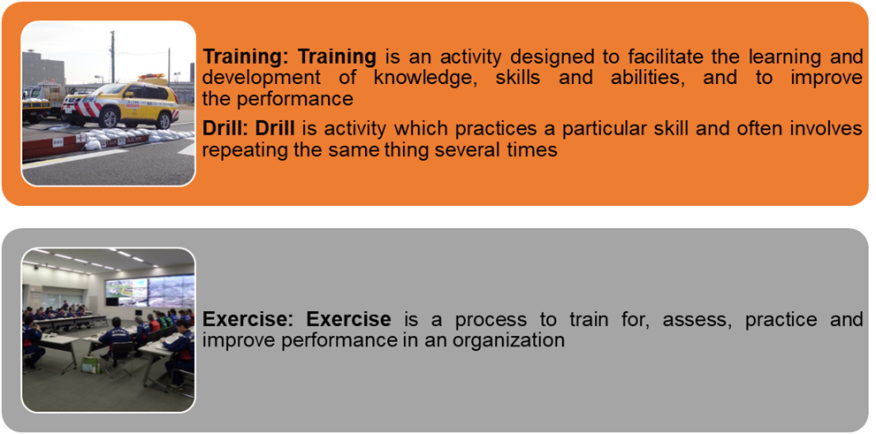
Disaster Management Manual
A manual for practitioners and decision makers!

Disaster Management Manual
A manual for practitioners and decision makers!
To prepare for emergencies such as disaster response, road managers need to enhance the management capabilities of the road management department, the command and order capabilities of the field departments, and the capabilities of the front line of maintenance and management to ensure road functions. To achieve this, it is important to have a plan in place for appropriate responses to various emergencies and to have the capacity to deal with emergencies on a regular basis. In other words, road management activities must be carried out so that road functions can be continued or resumed without any significant delay when an emergency event occurs. To achieve this, it is important to 1) to plan measures and responses so that they can be implemented promptly, 2) to prepare measures in advance so that they can be realized, 3) to ensure training (drill) and exercises, and 4) to carry out reviews and continuous improvement based on the strategy developed in advance.
In responding to emergencies, it is essential to develop a business continuity planning strategy for various emergencies based on an "all-hazards approach 1", taking into account all organizations involved in road management, including the national government, local governments, road management companies, and related partner companies. To do this, it is necessary to understand the business continuity capabilities of each organization, consider how to cooperate with each organization in business continuity, and work with each organization to increase its business continuity capabilities. This is discussed in the section on "Business Continuity Planning".
It is important to enhance the ability to respond to emergencies during normal operations. For this purpose, "training (drill)", and "exercise" are important. Figure 3.5-1 2 shows the definitions of training (drill) and exercise in ISO.
"Training (drill)" refers to the actions taken by road management departments to ensure that they can respond to crises by practically repeating the agreed-upon response procedures in accordance with the established procedures under the business continuity plan. It is difficult to provide "on-the-job-training" for emergency response in normal operations. For this reason, it is difficult to accumulate knowledge and experience in emergencies through normal operations alone. For this reason, road management agencies have written manuals on how to respond to emergencies. Training (drill)" is the process of practically repeating these manualized response procedures and methods in a variety of ways during normal times to improve one's abilities. In the U.S., an organization has been established to train people to respond to such emergencies and to improve their ability to respond to emergencies. The regular meetings of state officials also provide an opportunity for individuals to connect with each other on a personal level across state lines. This type of "training (drill)" is essential for improving emergency response.
In addition, "Exercise" is the process of practicing and confirming through instruction and exercises that a part of the organization or the entire organization is capable of responding to a certain emergency scenario, and to continuously improve its response. "Exercise" is to improve the ability to secure road functions in emergencies by confirming whether the abilities built up in ”training (drill)” can actually be demonstrated. In the "exercise" phase, it is generally conducted to check whether or not the participants can work together to respond to a certain scenario event, given the assumed damage and situation as preconditions. In other words, it is checked whether the communication of information among the various departments, the content and timing of decision-making, and the activities of the front line in the field can function in a coordinated manner. Such training activities are actively conducted at different levels and for different targets, such as collaboration at the level of national agencies, collaboration at the level of road management agencies, and collaboration within each department of each agency.
In this manual, "training (drill)", and "exercise" are categorized and described in detail.
